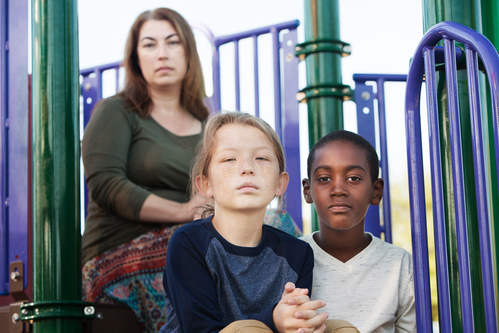 Many children are placed in foster care after Child Protective Services or a similar agency removes them from their natural home because of concerns about the child’s safety or wellbeing. This can often launch a daunting legal proceeding in which parents must prove they have remedied the situation so that the children can be returned to a safe environment. Mediation can be used as an alternative to this formal and stressful litigated process.
Many children are placed in foster care after Child Protective Services or a similar agency removes them from their natural home because of concerns about the child’s safety or wellbeing. This can often launch a daunting legal proceeding in which parents must prove they have remedied the situation so that the children can be returned to a safe environment. Mediation can be used as an alternative to this formal and stressful litigated process.
The mediation process is a voluntary process that involves the parties working together with a neutral third party who is skilled at conflict resolution. The parties work together to form a safety plan that is in the best interests of the child. This process can help the parties avoid adversarial court battles while being an inherent part of the solution.
Mediation allows the parties to work together to create a child safety plan that is tailored to the unique needs of the family. Rather than pitting biological parents and foster parents against each other, the process brings them together to work together toward mutual goals. The parties can have objective focus on what is best for the children and use this focus to guide the process. Because the parties are part of the solution, they can all feel that they have accomplished meaningful goals by working together rather than making parents feel that they are deficient or are being judged. Additionally, because the parties help come up with the plan, they are more likely to make strides towards accomplishing the objectives in the plan and to comply with it since they had a hand in drafting it.
Having a child-centered focus that is based on collaboration between the parties can serve as an effective alternative to litigation that addresses child protection cases to the benefit of all parties concerned.





 Mediation is an effective tool when dealing with family law issues. In the last few years, the use of mediation in foster care, adoption and dependency and neglect cases has risen exponentially. More communities recognize the efficacy of this tool, spurring them to adopt new mediation programs to address these issues. The traditional adversarial process involved in foster care and child protection cases often has inherent shortcomings that do not serve the best interests of the child or the parties involved. As such, mediation provides an effective alternative.
Mediation is an effective tool when dealing with family law issues. In the last few years, the use of mediation in foster care, adoption and dependency and neglect cases has risen exponentially. More communities recognize the efficacy of this tool, spurring them to adopt new mediation programs to address these issues. The traditional adversarial process involved in foster care and child protection cases often has inherent shortcomings that do not serve the best interests of the child or the parties involved. As such, mediation provides an effective alternative.